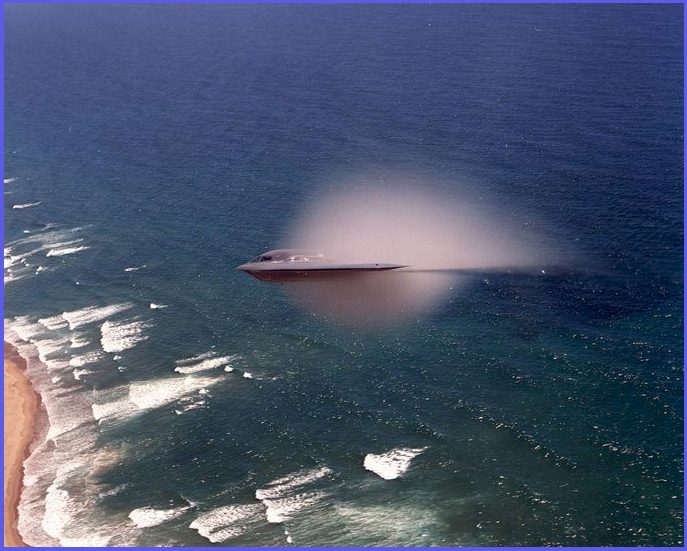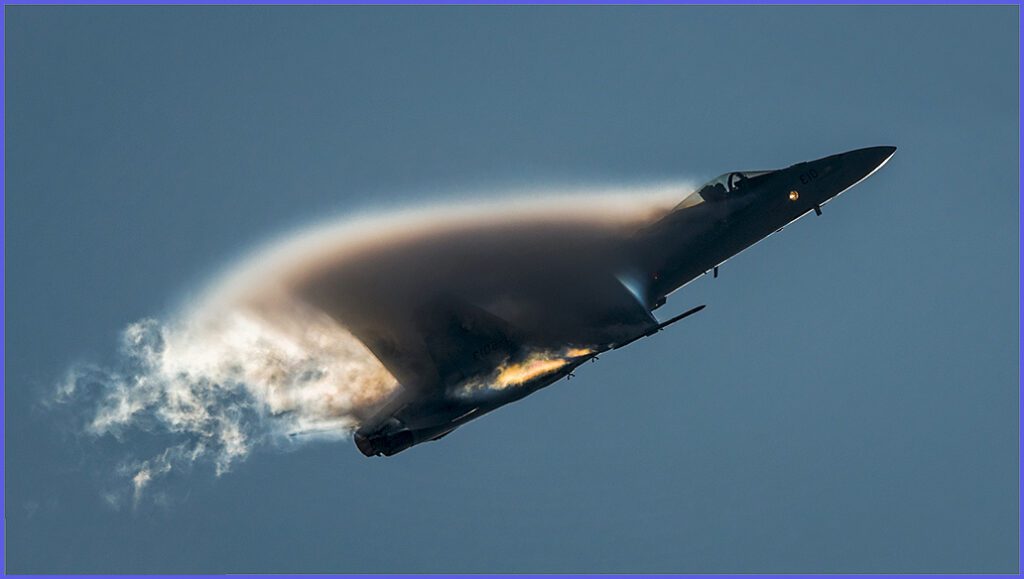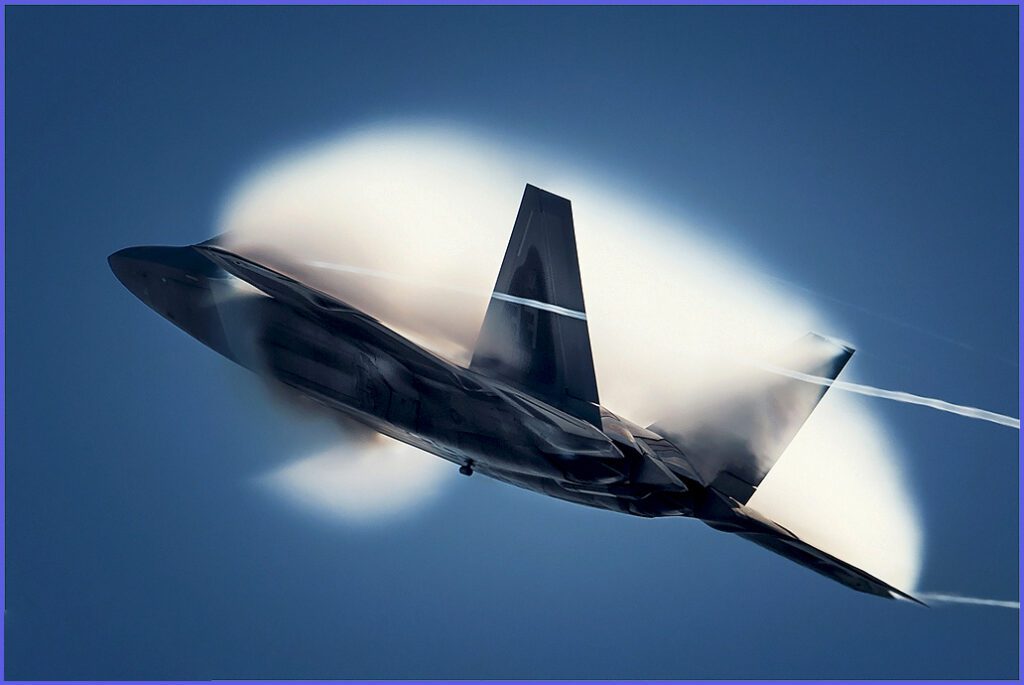A vapour cone, a shock collar or Mach diamond, is a visible cloud of condensed water vapour that forms around an aircraft when it approaches transonic speeds. Let’s discover The Science of Spectacular Vapour Cone Phenomena, which typically occur as the aircraft nears the speed of sound, creating a rapid pressure drop in the surrounding air.

The formation of a vapour cone is associated with an aircraft moving through a moist atmosphere at speeds close to the speed of sound, usually around transonic speeds, typically ranging from Mach 0.8 to 1.2, which is equivalent to 274 to 412 m/s. This range brings a mix of subsonic and supersonic airflow.
As the aircraft accelerates, it compresses the air in front of it, generating a high-pressure zone. Following this zone, in a moist atmosphere, the temperature drop causes the water vapour in the air to condense into tiny droplets, forming a visible cloud. This cloud typically manifests as a cone-shaped vapour around the aircraft, hence the name “vapour cone.”

Water condensation can appear between the peaks of shock waves created by a moving object, which makes the shock waves visible. This effect is not exclusively linked to an aircraft accelerating through the speed of sound (Mach 1).
Observations have shown that the ocean’s high moisture levels can cause this phenomenon at different speeds, including both transonic and steady subsonic speeds. Consequently, naval personnel often see this occurrence more frequently than those observing land-based aircraft.

Vapour cones are frequently seen during high-speed flybys or when aircraft execute manoeuvres that approach the speed of sound. Their appearance is fleeting and influenced by several factors, including the aircraft’s velocity, atmospheric conditions, and humidity levels.
Typically, a vapour cone is visible to the human eye for a very short duration, ranging from fractions of a second to a few seconds. Under ideal conditions, it might last from 1 to 5 seconds before dissipating. This duration can vary depending on the event’s speed and the observer’s distance and viewing angle.
The phenomenon is a visual indicator of the complex interplay between aerodynamic forces and atmospheric conditions, highlighting the transition from subsonic to supersonic flight. The vapour cone is temporary and depends on factors like the aircraft’s speed, atmospheric pressure, and humidity levels.

Here are three common and distinctive examples of the Vapor Cone Phenomenon.
Supersonic Jets During Air Shows: Fighter jets often demonstrate the vapour cone phenomenon during air shows. When performing high-speed flybys close to the speed of sound, especially in humid conditions, spectators can witness the dramatic formation of a vapour cone around the aircraft, illustrating its transition through transonic speeds.
Rocket During Launch: During the ascent of a rocket launch, especially as it approaches and passes through the speed of sound, vapour cones can often be seen forming around the vehicle. These are particularly prominent in the humid conditions typical of launches from Kennedy Space Center in Florida, providing a spectacular visual of the rocket’s acceleration through the atmosphere.

Atmospheric Nuclear Tests: The vapour cone type of phenomenon was observed by scientists during nuclear tests, especially in atmospheric tests where the explosion occurs in the air rather than underground or underwater.
Following a nuclear explosion, a shockwave moves through the atmosphere at extremely high speeds, creating conditions conducive to the formation of a vapour wave extending over a radius of more than 10 km.

What are the factors that create a vapour cone?
A vapour cone emerges due to the swift compression and expansion of air, typically instigated by an object traversing the atmosphere at high velocities, such as an aircraft, or in the immediate aftermath of a missile/rocket launch or an explosion-induced shockwave.
This compression and expansion induce a sudden decline in air pressure and temperature, prompting water vapour in the atmosphere to condense into minuscule droplets, forming a discernible cloud or cone-shaped structure around the object.
Various factors, including the object’s speed, atmospheric conditions (such as humidity and temperature), and the presence of nucleation sites for water vapour condensation, influence the formation of a vapour cone.

For how long can a ‘vapour cone’ be visible to the human eye?
The visibility duration of a vapour cone to human eyes can vary widely depending on several factors:
- Speed and Duration of the Event: The length of time the vapour cone remains visible depends on the speed of the aircraft or the duration of the event causing the phenomenon. Typically, vapour cones form and dissipate within fractions of a second to a few seconds.
- Atmospheric Conditions: Humidity levels and temperature affect the persistence of the vapour cone. In humid conditions, where there is more moisture in the air, the vapour cone may last longer compared to drier conditions.
- Distance and Viewing Angle: Observers’ distance from the event and their viewing angle can influence how long the vapour cone remains visible. It may be visible for a shorter duration if observed from a significant distance or an angle where it quickly moves out of view.

